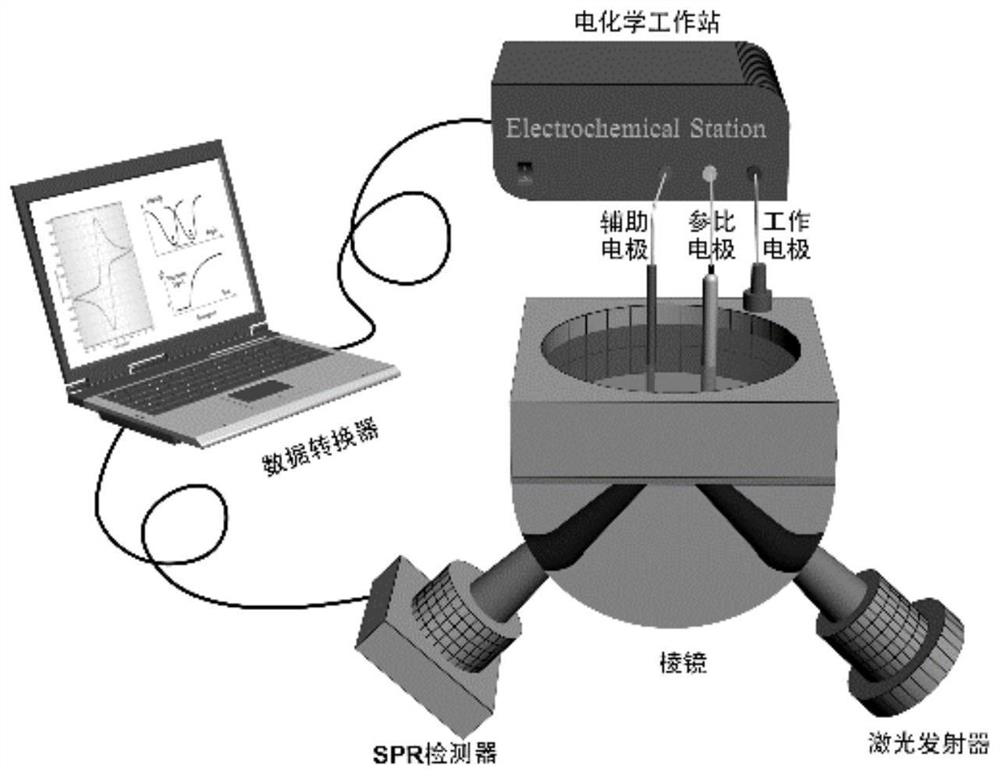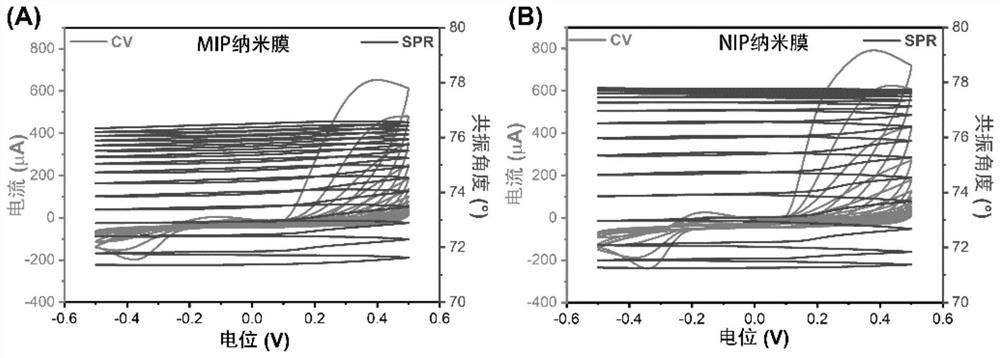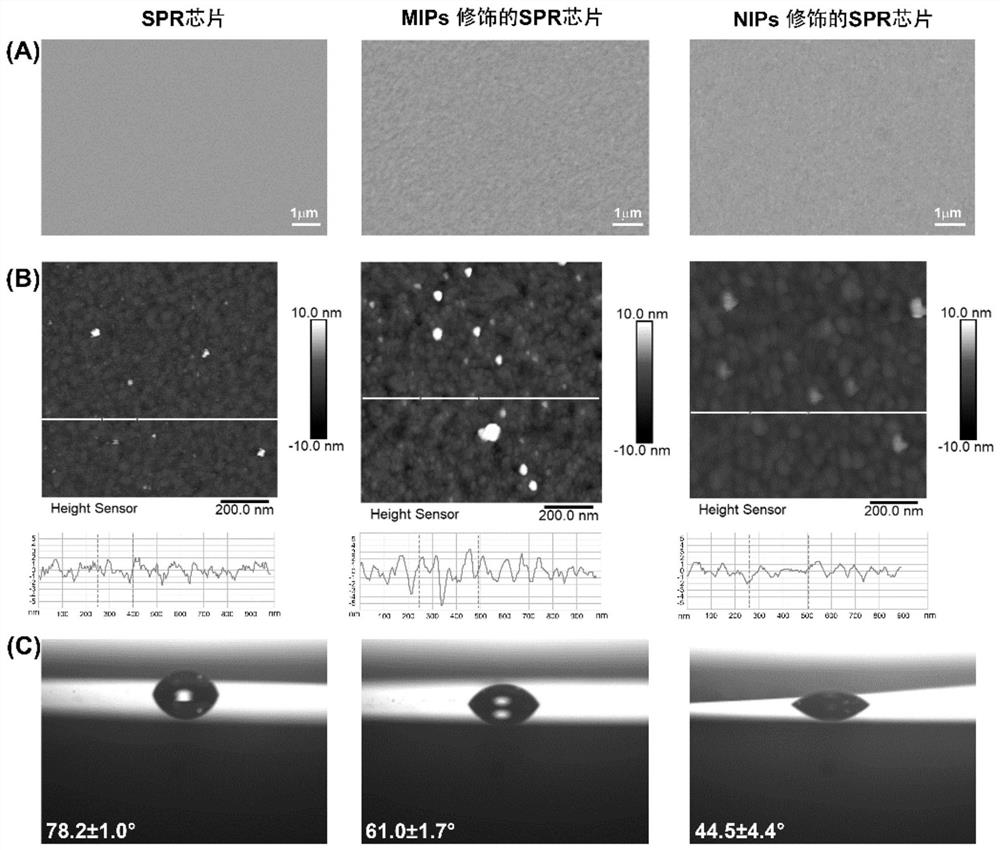Preparation method of molecularly imprinted SPR (Surface Plasmon Resonance) sensor for detecting amphetamine drugs
A technology of molecular imprinting and amphetamines, applied in instruments, measuring devices, scientific instruments, etc., can solve problems such as the inability to form a uniform and effective sensitive film on the surface of the SPR sensor, limiting the detection stability, reproducibility, sensitivity, and poor dispersion of the sensor , to achieve good application potential, improve detection sensitivity and selectivity, and controllable thickness
- Summary
- Abstract
- Description
- Claims
- Application Information
AI Technical Summary
Problems solved by technology
Method used
Image
Examples
Embodiment Construction
[0055] The technical solutions in the embodiments of the present invention will be clearly and completely described below with reference to the accompanying drawings in the embodiments of the present invention. Obviously, the described embodiments are only a part of the embodiments of the present invention, but not all of the embodiments. Based on the embodiments of the present invention, all other embodiments obtained by those of ordinary skill in the art without creative efforts shall fall within the protection scope of the present invention.
[0056] see Figure 1-8 , the preparation method of the molecularly imprinted SPR sensor for detecting amphetamine drugs that the present invention proposes, comprises the following steps:
[0057] S1. Preparation of experimental drugs
[0058] The drugs required for the experiment include cover glass (18×18mm), (±)3,4-methylenedioxyamphetamine (MDA), (±)3,4-methylenedioxymethamphetamine (MDMA), (±)-Methamphetamine (MA), Ketamine hyd...
PUM
 Login to View More
Login to View More Abstract
Description
Claims
Application Information
 Login to View More
Login to View More - R&D
- Intellectual Property
- Life Sciences
- Materials
- Tech Scout
- Unparalleled Data Quality
- Higher Quality Content
- 60% Fewer Hallucinations
Browse by: Latest US Patents, China's latest patents, Technical Efficacy Thesaurus, Application Domain, Technology Topic, Popular Technical Reports.
© 2025 PatSnap. All rights reserved.Legal|Privacy policy|Modern Slavery Act Transparency Statement|Sitemap|About US| Contact US: help@patsnap.com



